IMDb meta-data is runtime of 1 hour and 5 minutes, rated 5.7 by 307 cinemitizens.
Genre: Horror, Mystery
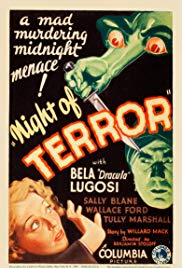
Verdict: Not enough Bela!
At the Rinehart estate, upstart Beau is a scientist who is about to experiment on himself by slowing his bodily processes to nearly nothing to be buried alive, and then dug up later. Nutso, right? Right! On the other hand think of the market for a drug that could do that. Before every McKinsey management training session with a twelve-year-old trainer the victims, the old salts, could deaden themselves to the nonsense and revive at the end. Hmm, sounds good, but back to the film at hand which does not sound so good.
Outside a Maniac is murdering so many people that the fraternity brothers ran out of fingers.
Meanwhile, the faithful servant Bela Lugosi peers around corners, creeps down hallways, probes into recesses. Is he the Maniac? No, we know he is not from the opening scene and that steals much thunder from the get-go.
Because they are wealthy and beautiful the Rineharts suppose they are safe. Just before being murdered they say ‘I’ll be all right.’ They aren’t. Did Hillary do it? Who insured their lives? Fired!
Yes, Maniac finds rich pickings in the Rinehart mansion on the Rinehart estate on Rinehart Drive in Rinehartville. Dad Rinehart is murdered and his will divides his fortune equally among the surviving relatives. That is not enough for any of them, and they fall to bickering, and cheer Maniac on when he murders again.
Bela continues to peer. His mystic wife goes into trances at the drop of a knife. Yet the proceedings are lugubrious. Then the comic cop shows up in the pre-code film where the police were often the comic distress. After the Hayes Code police had to be portrayed positively in works of fiction.
There are some fine players like Wallace Ford as the cynical newsman who injects energy, and Sally Blane, aka Loretta Young’s little sister. Even Beau is well played by George Meeker who is just too oily to be true.
Turns out Beau had a plan of his own, and it did not involve lying quietly waiting to be disinterred but how he managed to combine that with Maniac is anyone’s guess. The screenwriter did not even try to cover that. Bela was but a red herring. What a waste of this master of menace.
14 November
1732 First professional librarian in North America, Louis Timothee, was hired in Philadelphia at the Library Company which still exists. He was a multi-lingual protegé of Benjamin Franklin. Hmm, librarians.

1889 The American journalist, Nellie Bly (Elizabeth Cochrane Seaman), followed the footsteps of fictional character Phileas Fogg from Jules Verne’s Around the World in 80 Days. She started in Hoboken and came back 72 days later. She had made a career as an undercover journalist whose exposés of the conditions in a workhouse, an asylum, and a factory made her name. I have flown around the world a couple of times when those tickets were cheaper than point-to-point return tickets.

1922 The British Broadcasting Company (BBC) began the first daily radio broadcasts from Marconi House which I have walked by it in Aldwych a few times. Still listening to the BBC4.

1971 NASA’s Mariner 9 entered Mars’ orbit after 167 days in space. This was the first craft to orbit Mars and returned 7329 images over the course of its mission. Confession time: I have small Mars globe on my desk which is partly based on the data from Mariner 9.
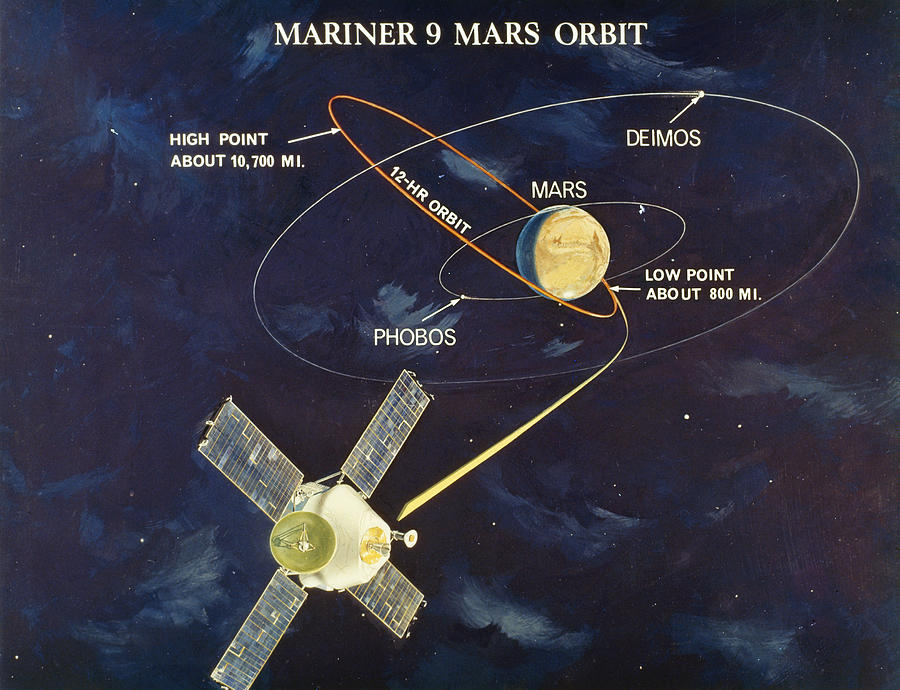
1994 The Eurostar passenger trains between London, Paris and Brussels was launched carrying passengers through the newly completed Channel Tunnel, the train reaches speeds of 186 MPH or 299 KPH. Ridden EuroStar a couple of times but not the one pictured below mysteriously abandoned in the Ardenne forest of Belgium.

‘Star Quest’ (aka ‘Terminal Voyage’) (1994)
IMDb meta-data is runtime 1 hour and 19 very l o n g minutes, rated at an inflated 4.4 by 238 relatives of the director.
Genre: Sy Fy and Bickering
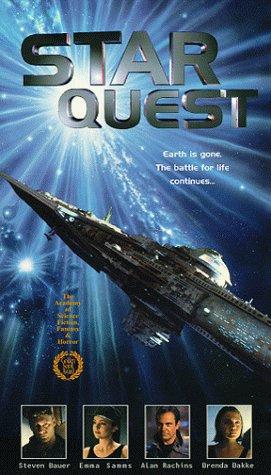
Verdict: It felt terminal.
In distant 2035 an international crew of bickering, backbiting, resentful slackers rides a spaceship to find a new home for the residents of the doomed planet Earth. These are the Bickersons and the fate of the species is in their hands. Game over.
What selection process picked this crew? Spin the bottle? Eenie, meanie, minnie, moe? Or were they the survivors of McKinsey management seminars? No, no one survives those.
The Bickersons awake from a cryogenic sleep – the scriptwriters best friend after the meteor shower — and find the low bid contractor struck again. The captain of the ship is a rotten corpse. Maybe he read the script and took the easy way out.
Thereafter others exit. First the 2-IC (that is, second in command for the pacifists) steps up to the plate. Briefly. Now that he is in the big chair his butt print (the fraternity brothers suggested that image) allows him access to super secret intel. He reads the script and…. Yes, he hung himself in a hallway. So far nothing has happened but the payroll had diminished. Every managers dream come true.
Then the only one who seems to be taking his lines seriously snuffs it while wearing a virtual reality hood to watch a peep show. Meanwhile, others are doing a variety of pharmaceuticals. The snarling Russian in the ranks smokes oxygen burning cigarettes. Sure. That would be a good idea. The fraternity brothers waited for her to don a space suit and light up!
This crew has been carefully selected from the world’s population and this is it! It looks like President Tiny’s inbred cabinet of dolts, droolers, and dopes.
Then there is the automaton who even in death is irritating. Androids can be like that. Even the severed head of the android has been done in ‘Spaceflight IC-1’ (1965) discussed elsewhere on this blog.
It is by the numbers. The dead captain was dramatic in ’Planet of the Apes’ in 1968. The virtual reality was done to death in Star Trek. The drugs have been everywhere. These people did not need a spaceship for such banalities. The mechanical man, a woman in this case, is another tired trope stitched in.
It is all interiors. We never even get a glimpse of the stellar void, or any sense that the space ship is going anywhere or that the Bickersons have any control over it, though we get far too many shots of its vast CGI bulk.
Most of the action is the crew arguing about who is in charge. That part did seem realistic because pointless bickering is on most agendas. They snipe at each other. Denounce one another’s national origins and dress sense. The usual. No need to go into space for any of this.
And they didn’t. The end.
The Italian Sy Fy of the 1970s at least had some energy. Not so here. The direction is leaden. The screen play has no redeeming merits. The set is a card table. Within those limits the actors try to work up some drama, well, some of them do, and others keep looking at their watches. Me, too.
The past of 13 November
1474 Near Belfort, a Swiss army without William Tell defeated a French effort to conquer Switzerland in the Burgundian War. The threat united the peoples of Alps as never before and they stayed that way.

1835 Texas proclaimed its independence from Mexico, and became an independent and sovereign state (until 1845) with Sam Houston as its first president. A biography of Houston is discussed elswhere on this blog.

1895 First shipment of canned Dole pineapples from Hawaii. Still shipping. We have been to the original Dole plantation on Oahu, and another on Maui. Yum, yum.

1953 ‘Robin Hood’ was banned from Indiana state school libraries because it was communist. Oh, oh, watched it every Thursday evening about that time. Did not know he was Red Robin, thought that was a bird in the spring.

1981 The Canadarm, a robotic space arm (the first of five) was deployed on the Space Shuttle Columbia. They were used on more than 90 missions over 30 years. They originated in a Quebec engineering firm.

12 November – What a day!
1859 Jules Leotard performed the first flying trapeze circus act in Paris wearing a garment he designed for the purpose which has since borne his name. Cannot say I have ever donned one.
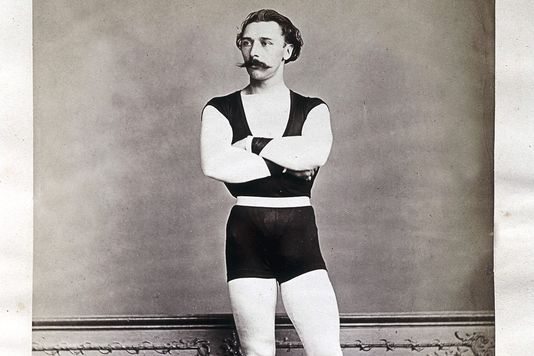
1900 Art Nouveau style dominated the Exposition Universelle (World’s Fair) in Paris which closed after 50 million visitors. The style uses natural forms, following the Arts and Crafts movement of the previous century. The Exposition disseminated it around the world with those millions of visitors. An enduring example are the Métro entrances like the one pictured. Been on many a Métro ride.

1919 Brothers Ross and Keith Smith with two others in the crew flew from England to Australia in 27 days. Prime Minister Billie Hughes of Australia offered a prize of £10,000 for the first flight from England in less than 30 days to develop an air link to Old Blighty. That was a fortune at the time. There were six starters but only one finisher. Flown the Kangaroo Route many a time, all in less than twenty-seven days. Whew!

1923 Adolf Hitler was arrested for attempt to seize power during Beer Hall Putsch. We forget that the Nazi party vigorously campaigned in many elections and won many of them. That was the voice of the people. For details see my chapter ‘Democratic Theory and Practice’ in Australian Politics, Rodney Smith (ed.) (Sydney: Allen & Unwin, 1989, 1992, 1997), pp. 35-50.

1966 Buzz Aldrin took a selfie performing extra-vehicular activity in space during the Gemini program. Aldrin remained a tireless advocate for space exploration and a bane to flat earthers. Go, Buzz! Check him out on You Tube.

‘Astrophysics for People in a Hurry’ (2017) by Neil Tyson.
Good Reads meta-data is 224 pages, rated 4.1 by 58201 litizens.
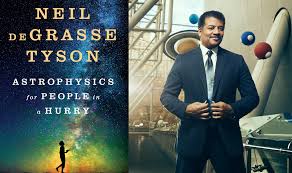
Verdict: all trip, no arrival. Life’s like that.
An edifying zip around the universe and back. It consists of a series of essays originally published in popular magazines tied together. It works well. The exposition is direct and simple with everyday imagery. I particularly liked the picture of two meltingly hot marshmallows colliding at near light speed. SPLAT, and there we have another star system.
Having no background in the subject, and I would not count the physics I did in college and neither would my teachers, Messers Throckmorton and Bonar, but then I may remember them better than they remember me.* I could not assimilate much of it with no framework or vocabulary in mind.
The single most important thing I can retain from the book is the continuity of matter in the universe. Start dust takes many forms but there is nothing new under any sun.

Tyson finds this continuity and the scale of the universe(s) exhilarating while other might find it intimidating or belittling. He communicates the wonder of it all very well, as do the pictures from the Hubble telescope as above.
The chapters are short, the technical jargon is absent, the explanations are concrete. For a few minutes the reader understands quarks (without Richard Benjamin), pulsars, Big Bangs, black holes, quantum mechanics, string theory, and the carbon in a hamburger. Beat that. But easy come, easy go.
The man can turn a phrase, as in:
‘The good thing about science is that it’s true whether or not you believe in it.’ A truth that anti-vaxxers, flat earthers, climate change deniers, and others will rediscover in time.
There are more than 7000 reviews on Good Reads. Have a look there. Does Tyson keep a scrapbook of such reviews? Do it, Neil!
I was not in a hurry but a short book was the order of the day.
When a conclave of science deniers gets together, Tyson can sometimes be found across the street in another hotel at a podium daring them to bring out their dead arguments. That’s how I came across him the first time, in just such a situation in Baltimore. Some mob of anti-science flat earthers were in one hotel and he pitched up across the street in another to spruik science at them.
Yes, I know he calls himself Neil de Grasse Tyson, but I generally only allow two names to a customer.
* [Censored.]
11 November – amen.
1675 German mathematician Gottfried Wilhelm Leibniz demonstrated integral calculus for the first time to find the area under the graph of y = f(x) function. The foundation calculus as some know it today, but not me.

1880 Irish tenants and harvest workers employed in Ballinrobe by land agent Charles Boycott ostracised him, leading to the term ‘boycott.’ Boycott was refused service in shops, drapers, livery stables, saloons, and people crossed the street rather than pass him by. It was a giant cause célèbre at the time and led to army intervention to force labor. While Boycott worked for Lord Erne who owned vast acreage, it was Boycott himself who was target because he was regarded as arrogant, oppressive, and brutal. He became, briefly, a hero in England and wasshowered with honours for taking the whip to those primitive Irish.

1918 The armistice to end The Great War came into effect. Amen. The front page of the Sydney Morning Herald for this date is behind a paywall so I used the freely available one from the New York Times. During the war it was called The Great War. Afterward the Department of Defense asked U.S. President Woodrow Wilson about filing the mountain of paperwork generated for the war, he said call it ‘The World War’ because it involved action around the world. On how it all started there is no better source that Barbara Tuchman, ‘The Guns of August’ (1962). This book influenced the Cuban Missile Crisis.

1933 One of the worst windstorms of the Dust Bowl blew from South Dakota to Kansas and on to Texas. and lasted more than a week. In one year an estimated 850 million tons of top soil disappeared in the wind, some of falling as far away as New York City, Boston, Philadelphia. First came insects, then drought, and then wind. Then the cycle repeated itself until there was nothing but dust left over a five-year period. The times they were apocalyptic.






1975 Australian Governor-General John Kerr dismissed the elected government of Prime Minister Gough Whitlam. The history wars over this event continue. I was listening to the radio at home when the news came. The exercise of the powers of the Governor-General were destroyed in their exercise may be the judgement of history. Nicholas Hasluck’s novel ‘The Dismissal’ (2011) is a long cool worm’s eye view of this totemic event when the goal posts moved.

10 November has a history.
When What
1871 At Ujiji near Unyanyembe in Africa Henry Morton Stanley said, “Dr Livingstone, I presume?” David Livingstone was one of many who sought the origin of the Nile River. Below is a map of his treks.

1903 Mary Anderson patented a “window cleaning device for electric cars and other vehicles to remove snow, ice, or sleet from the window.” She got the idea riding electric street cars in rain. It became standard equipment on automobiles by 1913.
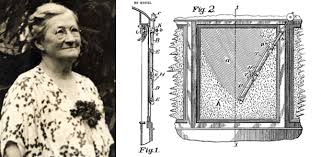
1911 The Andrew Carnegie Foundation took legal form. One of its major efforts was to build free public libraries like the one in which I learned to read and read. The Carnegie Foundation built the building ain 1903 before the Foundation was incorporated and the local community paid for its collection, staff, and upkeep. Been unable to shake the habit ever since.

1928 The first installment of ‘Im Westen nichts Neues’ by Erich Maria Remarque was published. He had been in the western trenches at 18, wounded five times: gassed, shot, bayoneted, hit by shrapnel, and shot again. In 1933 the book was burned and he fled to Switzerland. In 1938, his German citizenship was revoked on the grounds that he had NOT done war service, making him a stateless person. In 1943 his sister was judicially murdered for his crimes. Her surviving sister was charged 495.80 Reichsmark for the murder. Sounds like something Faux News would make-up, but all too true, unlike Faux News.

1969 Sesame Street debuted on PBS television. It was conceived and promoted by Joan Cooney, a former documentary producer for public television. Muppet characters, created by Jim Henson, are as varied as the human cast, like the crew of the Enterprise in 1966. Imagine how many of the original cast today would be excised by President Tiny Twit.
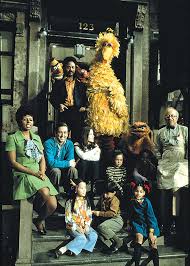
‘Los autómatas de la muerte’ (or ‘Neutron the Atomic Superman vs. the Death Robots’) (1962)
IMDb meta-data is runtime of 1 hour 20 minutes, rated 4.4 by 95 cinematiziens.
Genre: Sy Fy, Mexican
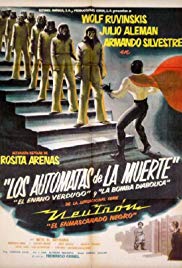
Verdict: Lucha libre!
While auditioning for Eggheads, Dr Caronte keeps three dead brains in his cupboard. They are hungry little grey cells and he sends a horde of bearded zombies in boiler suits to the Red Cross to take, not give, blood for these critters. Musical interludes punctuate the pace.
To confuse matters Caronte often wears white, while the bare chested, tireless battler for truth, justice, and the tamale-way, Neutron, wears black. Got it so far?
Neutron has a way of appearing and disappearing. Whoosh. There he goes again, or here he is again: Whoosh.
The action takes place in a darkened Mexico City alley, and in the director’s home, and on a sound stage nightclub. Many expenses were spared. The dubbing is terrible, befitting the picture. Still all and all, it is better than some early Roger Corman efforts and less predictable than anything on broadcast television.
Neutron does the lucha libre with the zombies, who are directed by a dwarf who can barely lift a revolver and runs like…..a dwarf, and not a CGI.
It seems Neutron and Caronte have a history in a series of the movies, four or five, but who’s counting.
Wolf Ruvinskis stars as the man without a shirt but with a mask and a Whoosh. He was a Lativian Jew whose family fled the Naziis. In the new world, as a teenager, he became a lucha libre champion and that took him to the heart of the sport, Mexico City, where he stayed. One thing led to another and when the falls got too hard to fake, he kept the mask to extend his career as Neutron. (Pretty sure that the physiotherapist I go to learned the trade at lucha libre.)
Amazon Prime tempted me with this offering, and it seemed better than some of the alternatives from Hollywood of late. At least it was not pretentious, did not present fiction as fact, or have Jack Black in it. Three pluses right there. Though admittedly the part of the dwarf would fit Tom Cruise.
9 November had its moments.
1925 Robert Millikan presented evidence of cosmic rays to the National Academy of Sciences at Madison, Wisconsin. A graduate of Oberlin College where the sky did not fall when women were admitted, he showed the extraterritorial origins of the energies he and others had recorded. Many other kinds of energies from space have since been identified. He got a Nobel Prize. We have been bombarded with such cosmic rays.
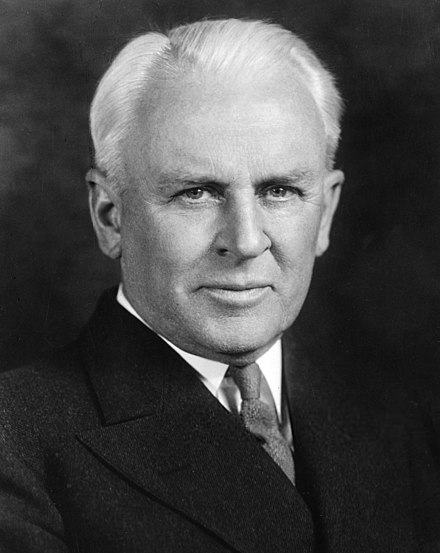
1961 The Professional Golfers Association (USA) ended the caucasians only rule (reaffirmed in 1960) in a year when a darling of the South African apartheid regime, Gary Player won the open. It was the last major sports organisation to end this explicit racism and did so with reluctance only after repeated litigation by individuals, clubs, and associations. It was finally coerced into it by Stanley Mosk, Attorney General of the State of California, who had threatened to disrupt a scheduled tour with court orders, subpoenas, and writs. Speaks for itself.

1972 Discoveries of bones in Tanzania by the Mary and Louis Leakey caused the origins of humanity to be revised backward by one million years. These two were inveterate diggers, shifters, analysers who spent most of their lives in tents in Kenya and Tanzania. EVeryone’s family tree got longer as a result.

1980 Iraq and Iran War started and continued until 1988. After half a million deaths, it ended at the status quo ante without any change of borders or attitudes. It was largely trench warfare, featuring poison gas, child soldiers, human wave attacks, prisoners used as human shields with dissent groups from each country siding with the other to add to the mayhem. Within each country it was also the excuse for ethnic cleansing.

1989 The Berlin Wall opened for the first time since 1961. It was about 150 kilometres in all, and about 140 people were killed trying to cross it, including two just a fortnight before it crumbled. Amazed me at the time, like the Cold War, the Berlin Wall seemed immutable and eternal, and then it fell over. Been there and seen Checkpoint Charlie and more, a couple of times.

